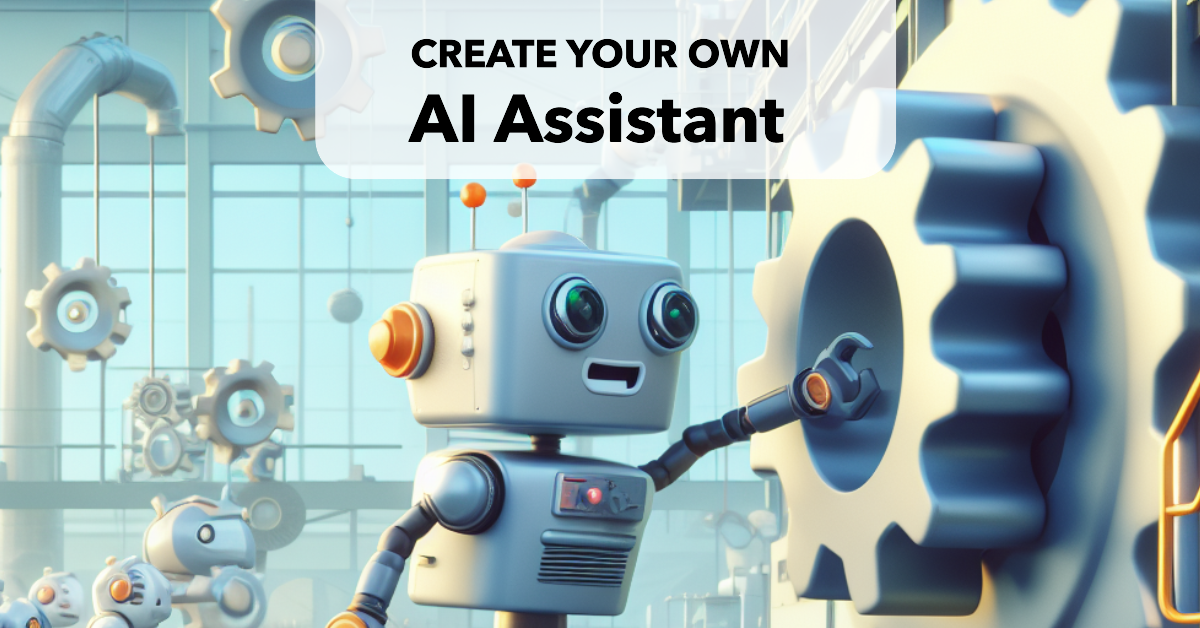What is the difference between the new OpenAI GPTs and AI Assistants
This post goes over GPTs and AI Assistants. What they are, how do they work, what are the differences, and which one is most suitable for your use case.
Wondering about the difference between OpenAI GPTs and AI Assistants? Well, you're in the right place! By the end of this post, you'll have enough information to choose the right approach for your application.
What are GPTs
"GPTs" is the plural of GPT (Generative pre-trained transformers) which itself a type of a large language model. You're most likely familiar with ChatGPT.
OpenAI recently announced the availability of GPTs enabling anyone (developers and non-developers) to build their own custom version of ChatGPT complete with a set of requirements and capabilities for a specific purpose.
Example of GPTs
OpenAI has created a few GPTs in collaboration with partners for public testing. One such GPT is the ZapierGPT that was showcased at the OpenAI DevDay Keynote, where it was asked about the presenter's schedule to which it pulled all the events happening for the day.
It also identified conflicts based on the calendar information. These are just the tip of the iceberg of what could be accomplished with custom GPTs.
Interesting stuff...
How do GPTs Work?
And the best part? You don't need to write a single line of code. That's because you can simply describe your GPT to a chatbot called GPT Builder. This GPT Builder is a conversational chatbot, like ChatGPT itself but as you chat with it, it builds your custom GPT.
Anyone will be able to publish their GPT to the GPT Store later this month. That's not all, OpenAI also announced that publishers will be able to monetize their GPTs based on usage through revenue sharing.
What are AI Assistants
An AI Assistant performs tasks based on a given set of instructions and tools. You can think of an AI Assistant as a digital assistant (or agent) that you hire to solve specific problems for your use case.
They can be used to generate and run code, retrieve information from external data sources, or call functions within your application's code.
Example of an AI Assistant
My last post was about creating and using your own AI Assistant using the OpenAI web interface and the API through the official Python SDK.
In the tutorial, I share how you can create a simple AI Assistant that takes in a PDF file and then transforms its contents into an X (Twitter) Thread.
I highly recommend reading the tutorial if you want to know more about AI Assistants and implement your own:

How do AI Assistants Work?
AI Assistants are hosted within the OpenAI platform and use a chosen large language model to think, communicate, and take action.
This may sound exactly like what GPTs are. And in a way, they are very similar.
The Big Question
So, what is the difference between AI Assistants and GPTs?
While both GPTs and AI Assistants can be used to create a custom ChatGPT, the core difference is that anyone can use GPTs unlike AI Assistants which require programming knowledge.
GPTs and AI Assistants both live in the OpenAI environment. You will be unable to customize the look and feel of GPTs beyond what OpenAI offers. While this has the benefit of creating your GPT in no time since the user interface and infrastructure are taken care of, it imposes interface limitations. Opting for AI Assistants gives you control since you control how AI capabilities are integrated within your app.
As always, thanks for reading and I hope that this post was useful to you. Please subscribe now for $0 and get notified whenever a new post is published.
Further readings
More from Getting Started with AI
- OpenAI Function Calling: An example using the Assistants API Functions tool
- A comparison between OpenAI GPTs and its open-source alternative LangChain OpenGPTs
- OpenAI Assistants API: How to create your own AI assistant with or without code
- OpenAI GPTs: Create and make money from your own custom ChatGPT using the GPT Store



